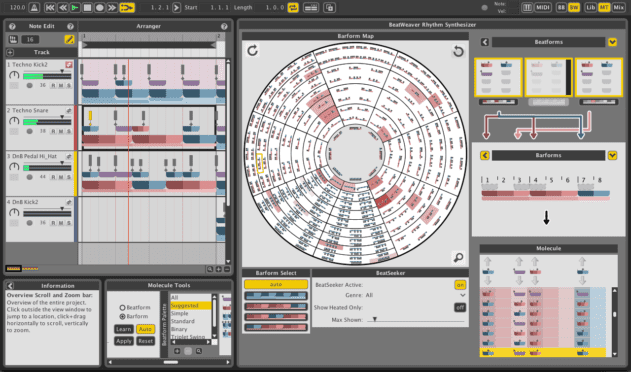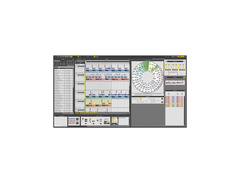

I’ve heard that this feature is often spot-on, and when it isn’t, users might just get a pleasant surprise or at the very least - a start point to work from! Unfortunately, this feature is only available for Ableton Max for Live users. Max for Live users can take advantage of a cool feature called Import Wizard that analyzes a MIDI performance to interpret the key and chord progression.I wouldn’t be surprised if an updated version is in the works because LiquidRhythm has this feature. Standalone version! I’d like to launch and compose with this powerful MIDI music composition environment without going near my DAW.Ğxperiment freely without going out of key.Inspiring - bust through songwriters block.ğast and easy, yet powerful with an excellent workflow.By using a Chord Tracks along with the Rhythm Editor of Liquid Rhythm, users can sketch out rhythm, chords, melody, and harmony.

All in all, this is a very visual, tactile virtual process that is unique and rewarding. The Voice Layer helps add harmony to melodies and chords. This allows users to construct progressions and then add cool stuff, like melodic rhythms. If the Key Layer is locked, none of the chords are changed. There are also ways to change chord progression with or without adjusting the melody. If not, I wipe the canvas clean and start over. If the painted notes are inspiring, I edit. I can begin with presets or freely splatter notes and see what sticks. I consider Liquid Music’s workspace a canvas. Keys may be changed (major, minor, dorian, phrygian, lydian, etc. The chords within the selected key are clearly indicated and distinguishable from dissonant or out-of-key chords. Chord Roots, Types, and Modifiers help create and refine chords. A common approach is to create a chord progression as a framework for the note painting. The Harmony Builder provides a powerful set of tools that have a moderate learning curve, but the rewards are great. There are many ways to use Liquid Music - it can suit various workflows. You can manipulate and “evolve” song ideas in real-time using these layers of control: Please notice the video tutorial and the section at the bottom of the webpage that lists the layers and tools (Sketch, Key, Chords, Voices, Rhythm). I was going to clearly outline my workflow and illustrate the main features one-by-one, but half way through writing I realized that WaveDNA does a much better job. Is using a chord book and reference chart cheating?
#Wavedna liquid rhythm software
The fact that so many traditional musicians and producers are upset about this software clearly indicates how fantastic it is! Having said the above, plugins do tend to create more producers than musicians. Plugins don’t kill music “musicians” kill music! Yeah, the digital audio world has made it easier to produce generic junk, but it has also made it easier for talented people to realize their golden potential. Let’s not blame the tools for the overwhelming percentage of terrible music being produced today. Let’s get right down to the question at hand - is using music composition software cheating? My opinion - who cares? Whatever it takes to translate creativity from your brain to mixer or to jolt your noodle out of songwriters block is fine by me. Upon launch, users will instantly notice a clean, modern interface that is intelligently arranged.

Note: Multiple instances may be used, and there is a built-in system that keeps CPU optimized. To setup this plugin, launch your DAW, create a MIDI track, assign an instrument, and then load Liquid Music as an effects plugin. The purchase, download, install, and authorize process is straightforward with no surprised. Liquid Music by WaveDNA is an inspiring MIDI music performance designer software that enables users to quickly create melodies, harmonies, and chords by “painting.” It’s effortless, visual, and perhaps even revolutionary!


 0 kommentar(er)
0 kommentar(er)
